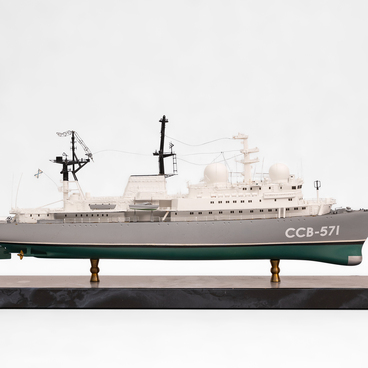The German battleship Tirpitz was a legendary vessel of the naval forces of the Third Reich, the Kriegsmarine. It was the most powerful ship of the Second World War. The British navy carried out multiple unsuccessful attacks against the battleship. She rarely saw combat, but by her very presence in Norway the battleship threatened the Arctic convoys headed to the USSR. In addition, the ship held down significant forces of the British fleet
The Bismarck-class battleships, to which the Tirpitz also belonged, were launched in 1939. She was named in honor of Admiral Alfred von Tirpitz, the founder of the modern German navy. The Tirpitz had a crew of 2,500 men, a maximum displacement of 53,500 long tons, a total length of 253.6 meters, and a width of 36 meters. Its armor protection was unparalleled in the world, with thicknesses of up to 320 millimeters in some areas, and 360 millimeters for the conning tower and main gun turrets. Thanks to all these characteristics, the battleship could withstand almost any type of bomb attack.
The battleship, with her enormous size, largely remained hidden in the Norwegian fjords. Locals provided information about the ship’s whereabouts to the Allies, so the crew tried to conceal it at all times, including by using a smoke screen based on sulfonyl chloride. This allowed the Germans to keep the ship’s location secret from enemy aircraft and vessels. The German fleet command took great care of the Tirpitz, mindful of the fate of her sister ship, Bismarck, which was sunk during her only campaign in May 1941 by the British Navy.
Without participating in the attacks directly, the battleship Tirpitz played a major role in the sinking of Convoy PQ-17. Left unguarded precisely because of the threat from the Tirpitz, the PQ-17 sustained damage from attacks by German aircraft and submarines.
The British armed forces periodically managed to
disable the ship. They finally prevailed only in November 1944 after an air
attack with heavy Tallboy bombs. Parts of the battleship are on display in
military museums around the world.


